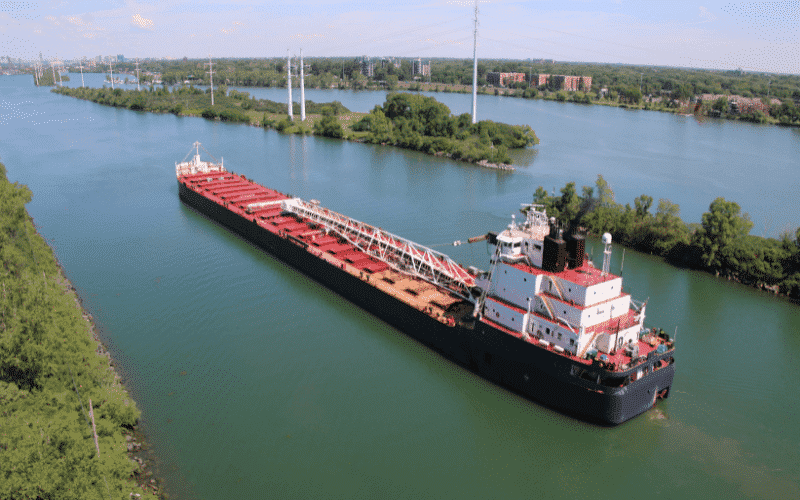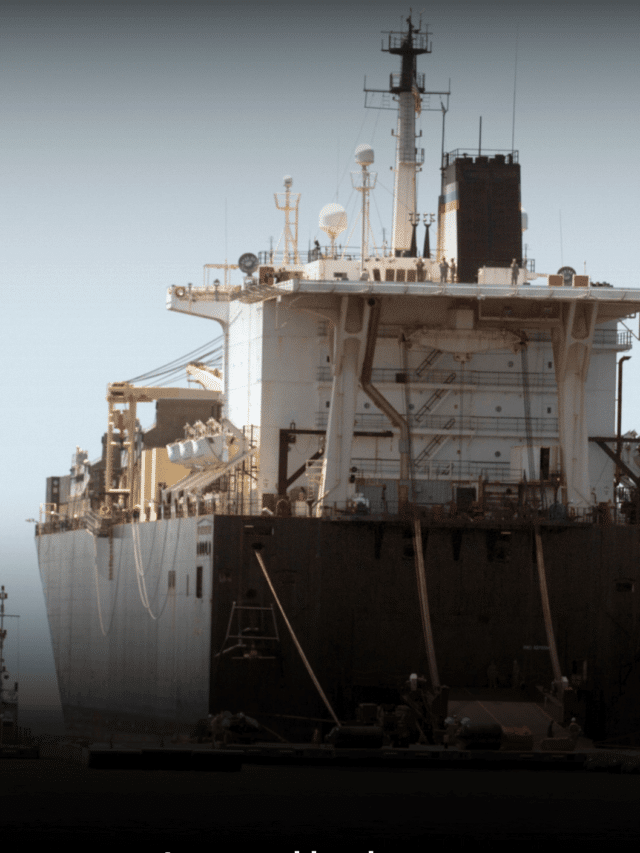St. Lawrence Seaway: The Importance of the Shipping Canal to the Commercial Shipping Industry
St. Lawrence Seaway, today, is a massive seaway, combining the USA and Canadian waters, allowing shipping transportation to upper parts of Canada.
Besides being a major route for most ships travelling in these parts of the world, it is also a major source of hydroelectric energy to both nations. It is a source of livelihood and life for many people. But for some, it is also a bitter truth that changed lives forever when it happened.
Today, it stands as one of the most important structures for the shipping world in the North American region but St. Lawrence Seaway was not always thought of as something so good, not at least by everyone.
History: Since the beginning
Like any huge structure that makes its mark, St. Lawrence Seaway has a long history, full of twists, turns, suspense, drama, politics and lives involved. Its project was suggested a long time before it actually came into existence.
Starting from as early as the 1890s, this project finally saw completion in 1959, when it was officially opened under the authorization of both America and Canada. But it was not an easy route all along.
After having proposed the idea, the plan for the construction of the St Lawrence Seaway system almost stopped for many years. However, it restarted in 1954 and efforts of thousands of workers later, the St. Lawrence Seaway system finally became a reality.
Geography and location: How and where does it lie?
St. Lawrence Seaway goes a good 2300 miles from the Gulf of St Lawrence in the north Atlantic to the far northern reaches of the Great Lakes in the heart of North America.
Starting from Lake Ontario in Canada, it goes as far as New York, about 1900 miles away. On its way, it covers both Canadian and American regions that include Ontario, Illinois, Michigan, Minnesota, New York, Ohio, Vermont and Wisconsin.
Its location was carefully decided upon by the engineers then so as to suit the needs of both countries. It runs right from the Gulf of St. Lawrence, passing Canadian cities like Becancour, Sorel and Montreal before reaching American soil through Buffalo, Cleveland and Detroit. The extensive coastline of this seaway system today includes a large number of cities, making it one of the most important routes.
Construction: what went into the making?
Construction of the St Lawrence Seaway system took four years from the time it started but its planning had been going on for a long time. During the planning phase, lots of ideas were proposed but the final product was somewhat different.
The project kept getting delayed either due to political constraints or economic issues until the idea of an all Canadian seaway was proposed by the Canadian government.
It was then both countries launched a full-scale construction plan for this system. Thousands of workers, four years, top-class technology and a lot of efforts went into making this project a reality.
However, it is a little known St Lawrence Seaway fact that for its construction, thousands of people living along the coastline of this river had to be moved.
A lot of changes to the natural flow of the river were made to suit the artificial needs it was supposed to cater to. The original shoreline of this river has now been shifted to a new one, the sea bed was altered, masses of water were redirected to suit the location demands and new towns were set up while old ones withered away in this massive project.
The economic benefits of the construction of the St. Lawrence Seaway system have long surpassed the cost of building it but for some, the price was too high to be measured in currency.
St. Lawrence Seaway facts
Ever since the construction of this system, the shipping industry has seen a big change for good. The boost in transportation has not only made shipping easier but promoted trade and travel between the two countries and further much easier.
- The most important St. Lawrence Seaway fact is that it made shipping right up to the final destination of much smaller ports possible instead of having to load off the ships at larger ports first.
- It cuts the shipping cost as the route taken has become much shorter.
- Also, navigation from American to Canada and vice versa has now become safer. The earlier narrow section of this river has now been altered to allow easy movement of ships which makes navigation in these waters much more risk-free, hence free trading opportunities.
- Today, the St. Lawrence Seaway system runs under the joint jurisdiction of Canadian laws and US coast guard laws, and smoothly so. It receives all kinds of shipping containers, in high numbers every day.
- Since its start in 1959, a whopping 2.5 billion tons of cargo have been shipped between the US and Canada.
- And it does not just cater to the need of these two countries. At least 25% of ship traffic reaching its ports is from Europe, Africa and the Middle East.
The shipping industry has and is still gaining a lot from the construction of this system. Sure, there were some hitches and a lot of time and effort went into it. But today, it seems all worth it.
You may also like to read-How the Water Locks of Panama Canal Work?
Magdeburg Conduit – The Water Bridge of Germany
Disclaimer: The authors’ views expressed in this article do not necessarily reflect the views of Marine Insight. Data and charts, if used, in the article have been sourced from available information and have not been authenticated by any statutory authority. The author and Marine Insight do not claim it to be accurate nor accept any responsibility for the same. The views constitute only the opinions and do not constitute any guidelines or recommendations on any course of action to be followed by the reader.
Do you have info to share with us ? Suggest a correction
About Author
Marine Insight News Network is a premier source for up-to-date, comprehensive, and insightful coverage of the maritime industry. Dedicated to offering the latest news, trends, and analyses in shipping, marine technology, regulations, and global maritime affairs, Marine Insight News Network prides itself on delivering accurate, engaging, and relevant information.

About Author
Marine Insight News Network is a premier source for up-to-date, comprehensive, and insightful coverage of the maritime industry. Dedicated to offering the latest news, trends, and analyses in shipping, marine technology, regulations, and global maritime affairs, Marine Insight News Network prides itself on delivering accurate, engaging, and relevant information.
Latest Maritime Knowledge Articles You Would Like:
Subscribe To Our Newsletters
By subscribing, you agree to our Privacy Policy and may receive occasional deal communications; you can unsubscribe anytime.
Web Stories






















The st lowrence sea way is a verry good project in boosting the economy of Cananda and America.can African nations come up with such cannal to connect Indian ocean and Atlantic.this can be the gate to industrialisation in Africa